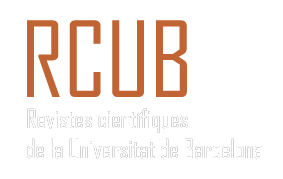Leveraging generative AI tools for effective academic writing
DOI:
https://doi.org/10.1344/REYD2024.30.46080Palabras clave:
Chat GPT, habilidades de escritura, creatividad, pensamiento cognitivo, tecnología, inteligencia artificialResumen
La intrincada relación entre la manifestación creativa y su creador es un tema de profunda exploración y satisfacción psicológica. Una forma de arte, ya sea visual, literaria o performativa, sirve como canal para que el creador exteriorice sus pensamientos y emociones más íntimos. Este caso narra el arte de escribir (el conjunto de habilidades) que puede evocar una sensación de alegría, permitiendo a los escritores canalizar su imaginación, experiencia e individualidad en formas tangibles.
La integración de tecnologías habilitadas para IA, como ChatGPT, ha revolucionado innegablemente el panorama del arte de escribir. El caso es la preocupación pertinente sobre la posible pérdida del arte de escribir y el posterior impacto en la alegría de la entrega del arte. Este estudio de caso profundiza en las repercusiones de la llegada de ChatGPT en el arte tradicional de la escritura y su influencia en la resonancia emocional de la expresión artística a través de las formas de escritura.
A medida que los algoritmos de IA como ChatGPT se vuelven cada vez más hábiles para generar texto, aumenta la erosión del toque humano en la escritura. Existe el riesgo de perder el poder emotivo que surge de la conexión genuina de un artista con su creación. El estudio descubre el efecto del contenido generado por IA en la dilución de los pensamientos creativos y la posterior felicidad derivada de su entrega.
Citas
Afzaal, M., Imran, M., Du, X., & Almusharraf, N. (2022). Automated and human interaction in written discourse: A contrastive parallel corpus-based investigation of meta discourse features in machine-human translations. SAGE Open, 12(4), 1-18. https://doi.org/21582440221142210.
Afzal, S., Dhamecha, T., Mukhi, N., Sindhgatta Rajan, R., Marvaniya, S., Ventura, M., & Yarbro, J. (2019). Development and Deployment of a Large-Scale Dialog-Based Intelligent Tutoring System. Vol. 2, pp. 114–121.
Ahmed, B., Ali, G., Hussain, A., Baseer, A., & Ahmed, J. (2021). Analysis of Text Feature Extractors using Deep Learning on Fake News. Eng. Technol. Appl. Sci. Res., vol. 11, no. 2, pp. 7001–7005. https://doi.org/10.48084/etasr.4069.
Al-Garaady, J., & Mahyoob, M. (2022). Public Sentiment Analysis in social media on the SARS-CoV-2 Vaccination Using VADER Lexicon Polarity. Humanities and Educational Sciences Journal, no. 22, pp. 591–609. https://doi.org/10.55074/hesj.v0i22.476.
Al-Garaady, Jeehaan (2022). An Analysis of Yemenis’ Responses and Sentiments on social media Towards the emergence of the COVID-19 Pandemic. Humanities and Educational Sciences Journal, no. 27, 589–607. Available at SSRN: https://doi.org/10.55074/hesj.v0i27.621.
Barrot, J. S. (2023). Using ChatGPT for second language writing: Pitfalls and potentials. Assessing Writing, 57, 100745. https://doi.org/10.1016/j.asw.2023.100745.
Brenden M. Lake et al., (2017). “Building Machines that Learn and Think Like People,” Behavioral and Brain Sciences 40 (2017): e253.
Chan, C. K. Y., & Lee, K. K. W. (2023). The AI generation gap: Are Gen Z students more interested in adopting generative AI such as ChatGPT in teaching and learning than their Gen X and Millennial Generation teachers? arxiv:2305.02878.
Civil, B. (2023, March 16). ChatGPT can hinder students’ critical thinking skills: Artifcial intelligence is changing how students learn to write. The Queen’s Journal. https://www.queensjournal.ca/story/2023-03-16/opinions/chatgpt-can-hinder-stude nts-critical-thinking-skills.
Creely, E. (2023). Conceiving Creativity and Learning in a World of Artificial Intelligence: A Thinking Model. In Creative Provocations: Speculations on the Future of Creativity, Technology & Learning (pp. 35-50). Cham: Springer International Publishing.
Firat, M. (2023). What ChatGPT means for universities: Perceptions of scholars and students. Journal of Applied Learning and Teaching, 6(1). https://doi.org/10.37074/jalt.2023.6.1.22
Hutson, M. (2022). Could AI help you to write your next paper? Nature, 611(7934), 192– 193. https://doi.org/10.1038/d41586-022-03479.
Imran, M., & Almusharraf, N. (2023). Review of teaching innovation in university education: Case studies and main practices. The Social Science Journal. https://doi.org/10.1080/03623319.2023.2201973.
Kohnke, L., Moorhouse, B. L., & Zou, D. (2023). ChatGPT for language teaching and learning. RELC Journal, 00336882231162868.https://doi.org/10.1177 / 00336882231162868.
Kolb, D. A. (1984) "Experimental Learning: Experience as the Source of Learning and Development", Prentice-Hall, Englewood Cliffs, N.J.
Korn, J. & Kelly, S. (2023, January 5). New York City public schools ban access to AI tool that could help students cheat. CNN. https:// edition.cnn.com/2023/01/05/tech/chatgpt-nyc-school-ban/index.html.
Lametti, D. (2022). AI could be great for college essays. slate.com. https://slate.com/technology/2022/12/ chatgpt-college-essay-plagiarism.html.
Li, X., & Ouyang, L. (2019). Challenges in the imitation of human poetry by AI. Artificial Intelligence Review, 52(3), 593-610.
Lo, C. K. (2023). What is the impact of ChatGPT on education? A rapid review of the literature. Education Sciences, 13(4), 410. https://doi.org/10.3390/educsci13040410.
Lund, B. D., & Wang, T. (2023). Chatting about ChatGPT: How may AI and GPT impact academia and libraries? Library Hi Tech News. https://doi.org/10.2139/ssrn.4333415.
Mahyoob, M. (2015). Semi-Automatic Annotation of Arabic Corpus: A Morpho-syntactic Study, Ph.D. dissertation, Aligarh Muslim University, Aligarh, India,
Mahyoob, M. (2020). Developing a Simplified Morphological Analyzer for Arabic Pronominal System. Available at SSRN 3599719. https://doi.org/10.2139/ssrn.3599719.
Niu, W. & Sternberg, R. J. (2006). The philosophical roots of Western and Eastern conceptions of creativity. J. Theor. Philos. Psychol. 26, 18–38.
Oliver, J. (2023). John Oliver on new AI programs: ‘The potential and the peril here are huge’. The Guardian. https://www.thegu ardian.com/tv-and-radio/2023/feb/27/john-oliver-new-ai-programs-potential-peril.
Patil, A. S., & Abraham, A. (2010). Intelligent and Interactive Web-Based Tutoring System in Engineering Education: Reviews, Perspectives and Development. In Computational Intelligence for Technology Enhanced Learning. Springer, Berlin, Heidelberg.
Pham, S. T., & Sampson, P. M. (2022). The development of artificial intelligence in education: A review in context. Journal of Computer Assisted Learning, 38 (5), 1408- 1421.
Ray, P. P. (2023). ChatGPT: A comprehensive review on background, applications, key challenges, bias, ethics, limitations, and future scope. Internet of Things and Cyber-Physical Systems, 3, 121-154. https: // doi.org / 10.1016 / j.iotcps. 2023. 04. 003.
Sadeghi, A. & Ofoghi, N. (2011). The psychological factors affecting students’ Creativity Inside the Class (CIC) (case study the University of Guilan, Iran). Procedia - Soc. Behav. Sci. 15, 263–270.
Sallam, M. (2023). ChatGPT utility in healthcare education, research, and practice: Systematic review on the promising perspectives and valid concerns. Healthcare, 11(6), 887. https://doi.org/10.3390/healthcare 11060887.
Sharples, M., & y Pérez, R. P. (2022). Story Machines: How Computers Have Become Creative Writers. Routledge.
Stokel-Walker C. (2022). AI bot ChatGPT writes smart essays–should professors worry? Nature. https://doi.org/10.1038/d41586-022-04397-7.
Tate, T., Doroudi, S., Ritchie, D., & Xu, Y. (2023). Educational Research and AI-Generated Writing: Confronting the Coming Tsunami. https://doi.org/10.35542/osf.io/4mec3.
Warschauer, M., Tseng, W., Yim, S., Webster, T., Jacob, S., Du, Q, & Tate, T. (2023). The afordances and contradictions of AIgenerated text for second language writers. https://doi.org/10.2139/ssrn.4404380.
Yan, D. (2023). Impact of ChatGPT on learners in a L2 writing practicum: An exploratory investigation. Education and Information Technologies. https://doi.org/10.1007/s10639-023-11742-4.
Yang, D., Zhou, Y., Zhang, Z., Li, T. J. J., & LC, R. (2022). AI as an Active Writer: Interaction strategies with generated text in human-AI collaborative fiction writing. In Joint Proceedings of the ACM IUI Workshops (Vol. 10).
Zawacki-Richter, O., Marín, V. I., Bond, M., & Gouverneur, F. (2019). Systematic Review of Research on Artificial Intelligence Applications in Higher Education—Where are the Educators? International Journal of Educational Technology in Higher Education, 16, 39.
Zhai, X. (2022). ChatGPT User Experience: Implications for Education. SSRN 4312418.
Zneit, R. S. A. Online Handwriting Signature Verification Based on Using Extreme Points Extraction. Eng. Technol. Appl. Sci. Res., vol. 6, no. 4, pp. 1084–1088, 2016. https://doi. org/10.48084/etasr.694.
Descargas
Publicado
Cómo citar
Número
Sección
Licencia
Derechos de autor 2024 Aiswarya Balachandar, Ramasundaram Gurusamy

Esta obra está bajo una licencia internacional Creative Commons Atribución 4.0.
El/la autor/a que publica en esta revista está de acuerdo con los términos siguientes:
- El/la autor/a conserva los derechos de autoría y otorga a la revista el derecho de primera publicación de la obra.
- Los textos se difundirán con la licencia de reconocimiento de Creative Commons que permite compartir la obra con terceros, siempre que éstos reconozcan su autoría, su publicación inicial en esta revista y las condiciones de la licencia.




 Síguenos en LinkedIn
Síguenos en LinkedIn Síguenos en Facebook
Síguenos en Facebook  Síguenos en Twitter
Síguenos en Twitter
